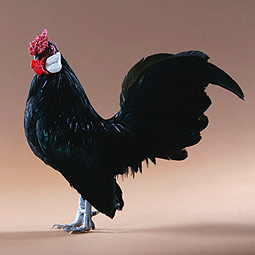
Malay Game
These are tall birds, originally bred as game chickens or fighting cocks. They need a lot of room to thrive and don’t do well in colder temperatures due to their light feathering.
There are black, black-red, Duckwing, Pile, white, and other color varieties.
These very large game birds showed up in England around 1830. Most came from the Malay Penninsula, others from India.
The birds spread across Europe in the mid 1800’s and by 1846 they showed up in the U.S. Currently there aren’t alot of Mayla Game birds left in the U.S.
They are a purely ornamental breed raised for show as they are poor egg layers, 120 eggs per year for younger hens, down to 45 eggs per year for the older hens. They are hard feathered. The roosters will weigh in around eleven pounds and the hens around nine pounds, laying a cream colored egg.
There is a dwarf or bantam version as well but it is uncommon in the U.S.





